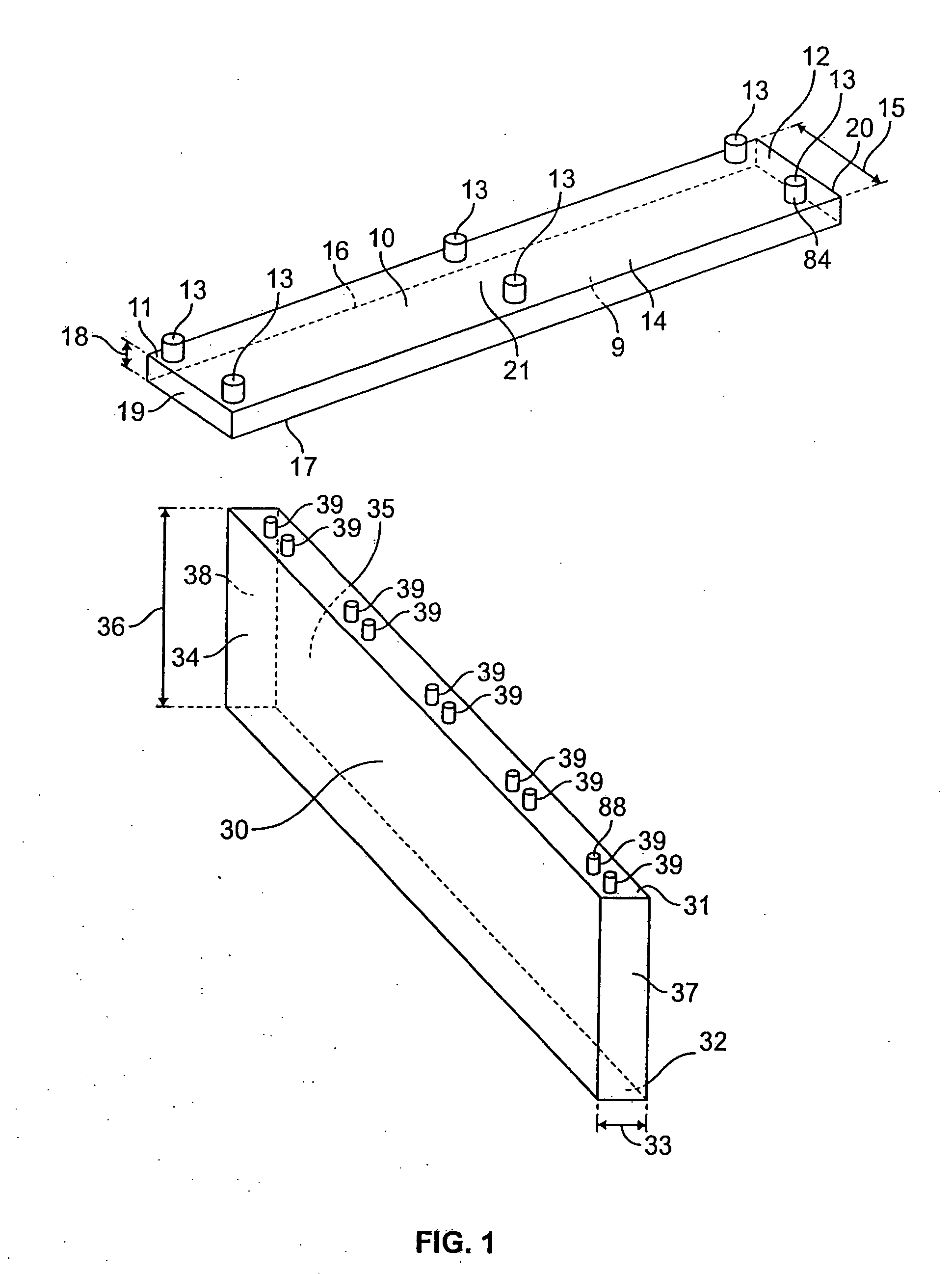Wooden dowel in pallet assembly
a technology of wooden dowels and pallets, applied in the field of pallets, can solve the problems of affecting the lead board of the pallet with significant force, affecting the work efficiency of the pallet, and the pallet is damaged at the lead board, so as to facilitate the attachment of transverse deck boards, facilitate assembly, and facilitate the effect of assembly
- Summary
- Abstract
- Description
- Claims
- Application Information
AI Technical Summary
Benefits of technology
Problems solved by technology
Method used
Image
Examples
Embodiment Construction
[0025]While the present invention is susceptible of embodiments of various forms, there is shown in the drawings, and will hereinafter be described some exemplary and non-limiting embodiments, with the understanding that the present disclosure is to be considered an exemplification of the invention. It is not intended to limit the invention to the specific embodiments listed.
[0026]In general terms, one embodiment of the pallet comprises the combination of wooden dowels and adhesive to connect stringers and deck boards to form a pallet.
[0027]Referring to FIG. 1, a deck board 10 and a stringer 30 can be seen. The deck board 10 has a first end 11 and a second end 12. The deck board 10 comprises a first pair of opposing elongated longitudinal surfaces 9, 14 with a first width 15, a second pair of opposing elongated longitudinal surfaces 16, 17 with a second width 18 and a pair of end surfaces 19, 20. The first width 15 is greater than the second width 18. Both the first end 11 and the s...
PUM
 Login to View More
Login to View More Abstract
Description
Claims
Application Information
 Login to View More
Login to View More - R&D
- Intellectual Property
- Life Sciences
- Materials
- Tech Scout
- Unparalleled Data Quality
- Higher Quality Content
- 60% Fewer Hallucinations
Browse by: Latest US Patents, China's latest patents, Technical Efficacy Thesaurus, Application Domain, Technology Topic, Popular Technical Reports.
© 2025 PatSnap. All rights reserved.Legal|Privacy policy|Modern Slavery Act Transparency Statement|Sitemap|About US| Contact US: help@patsnap.com



